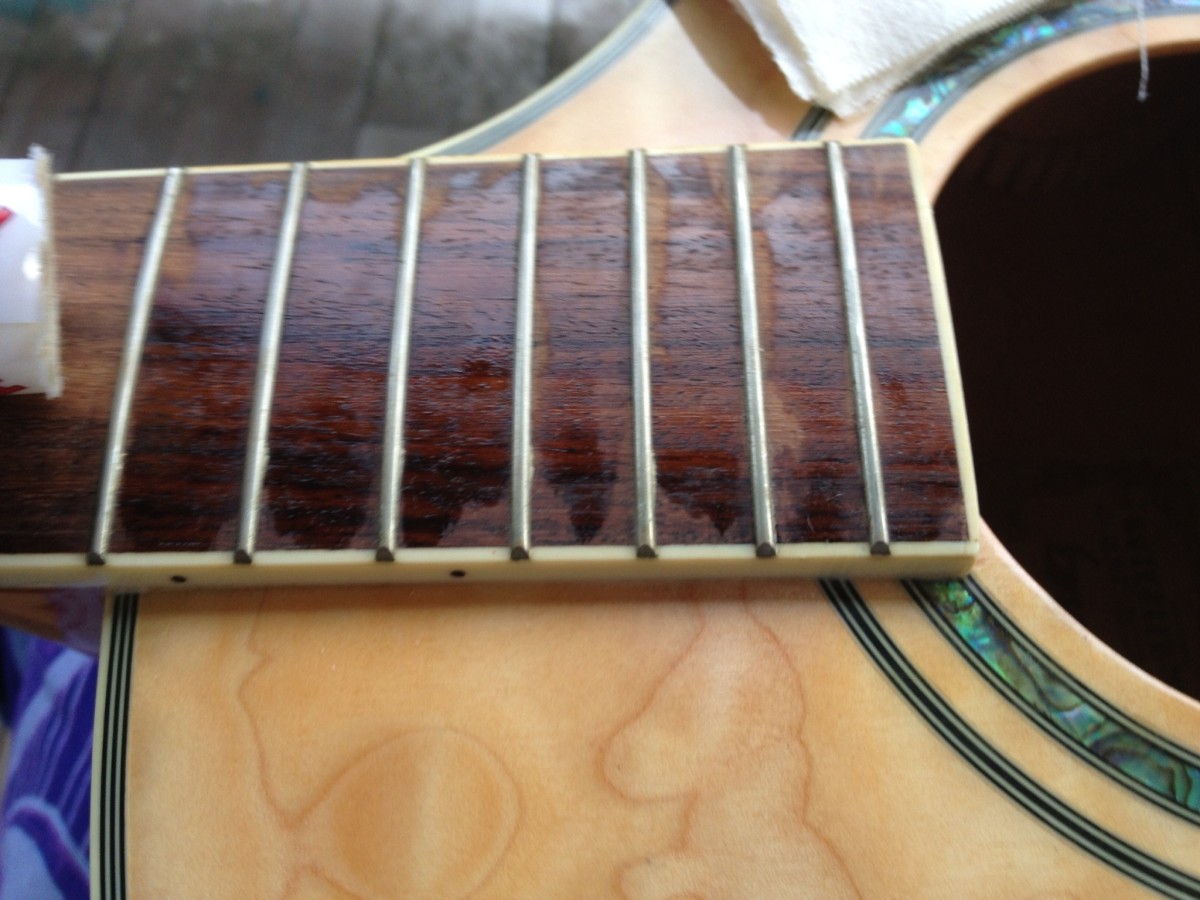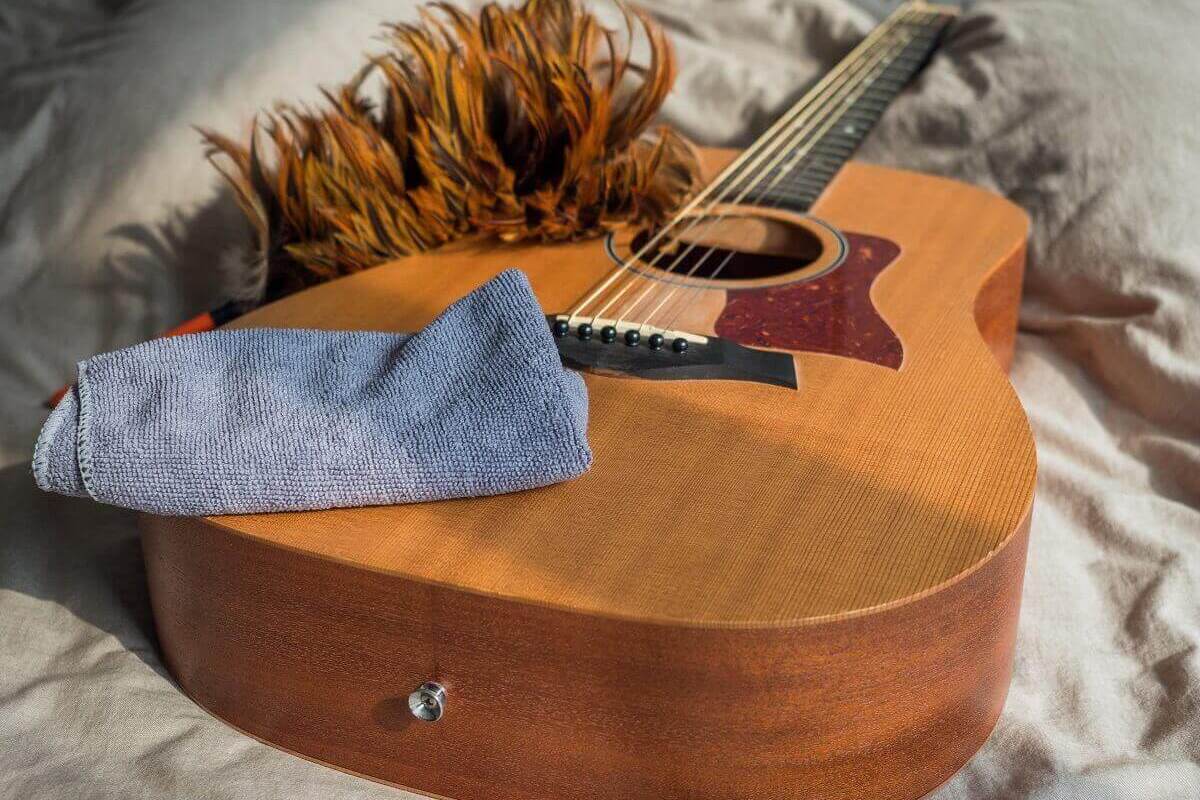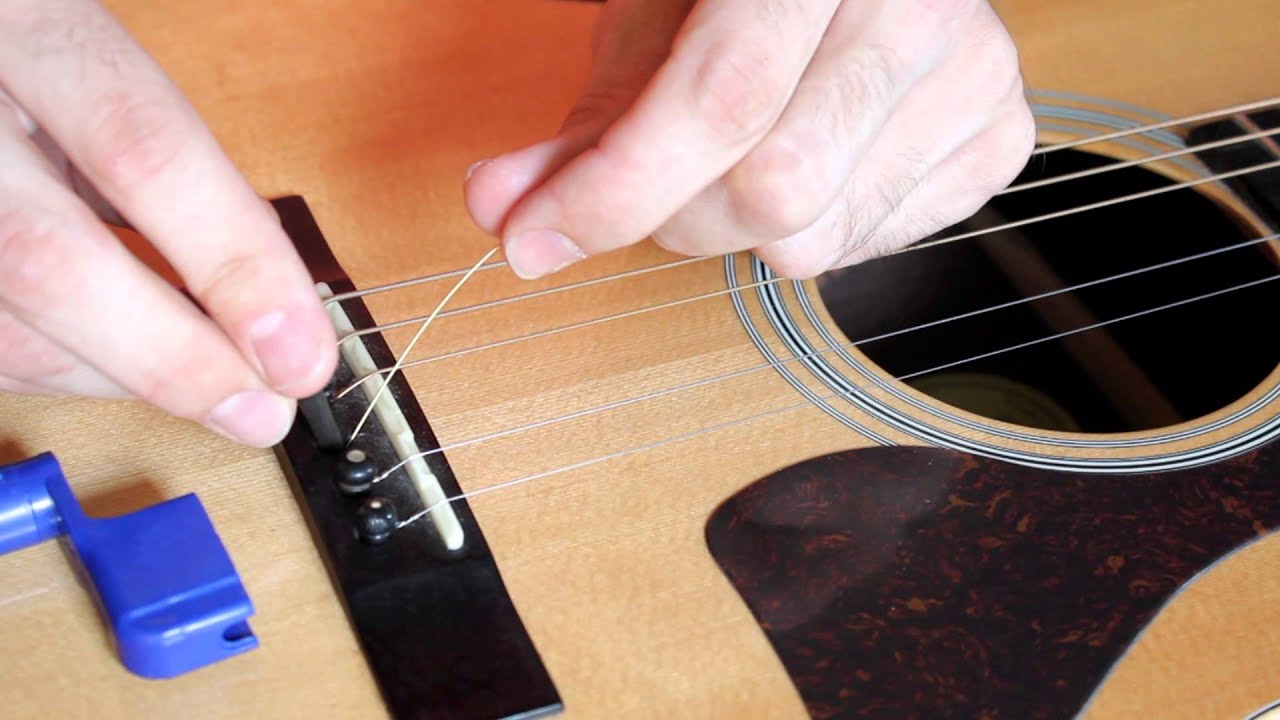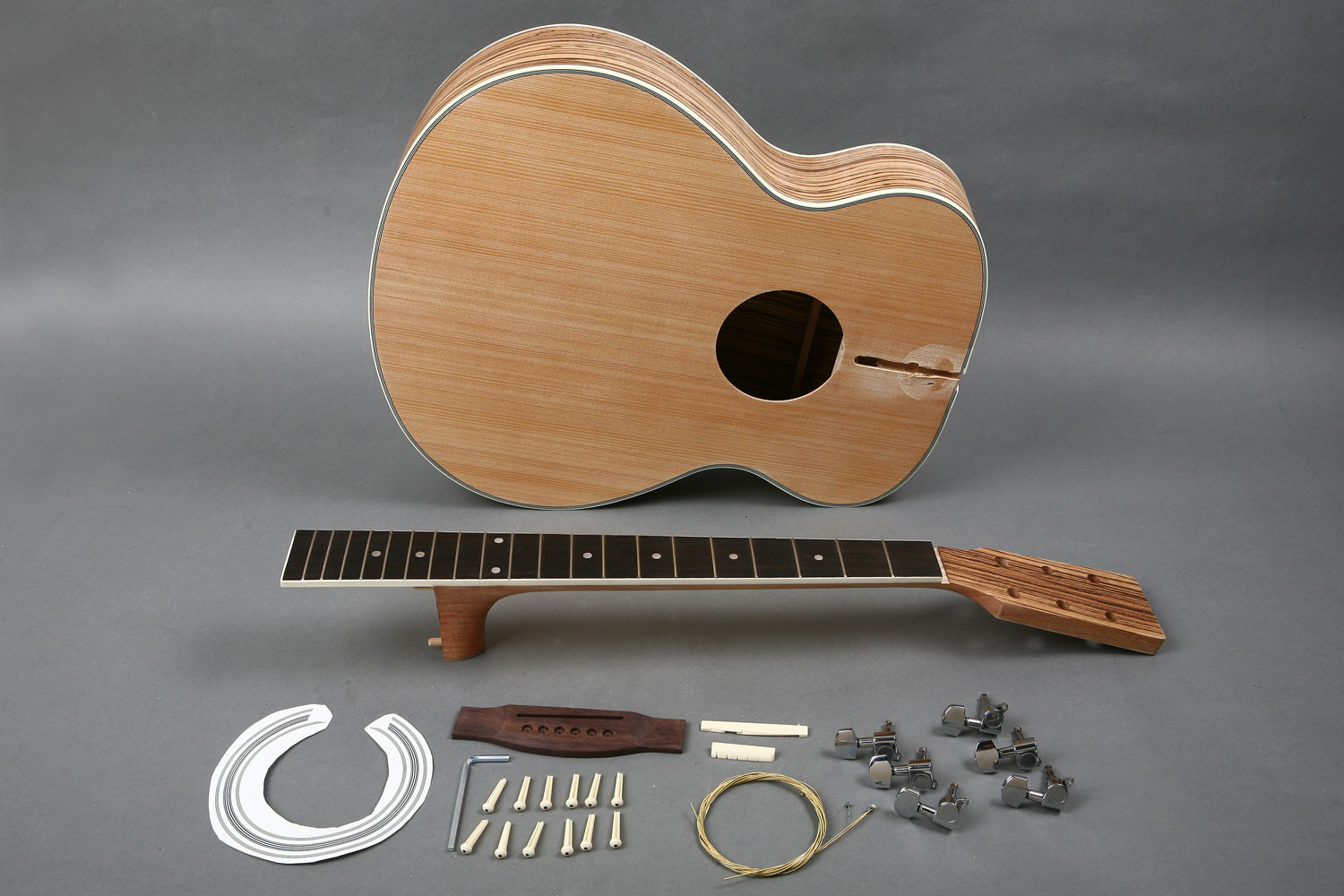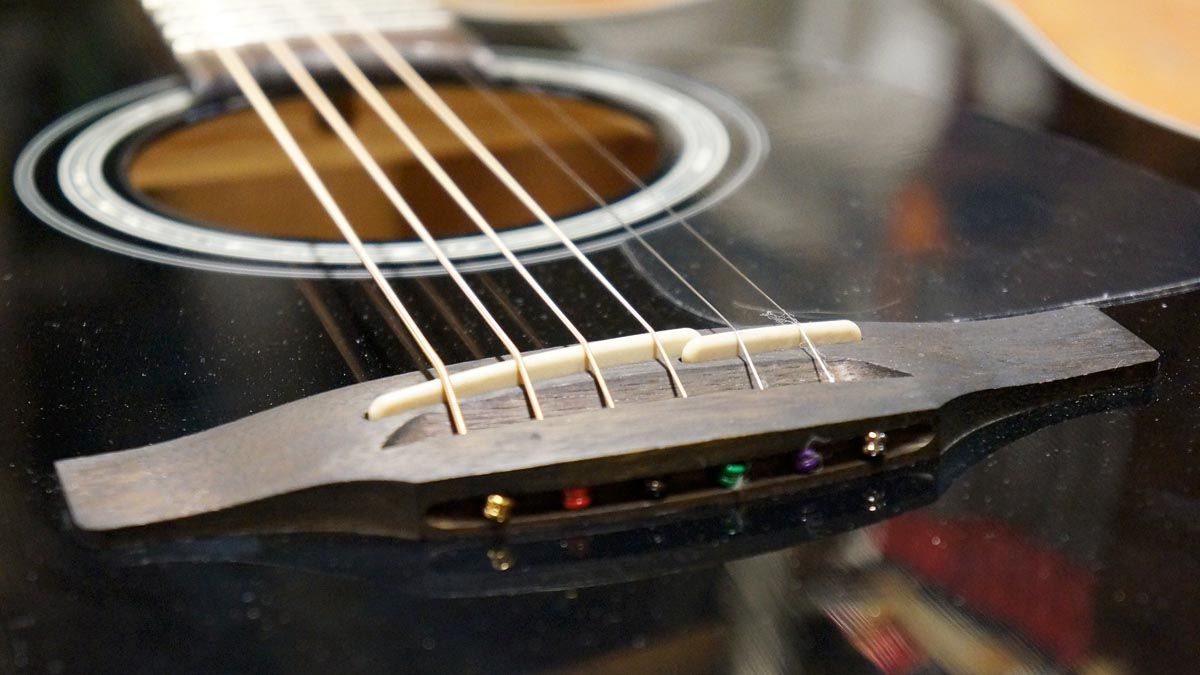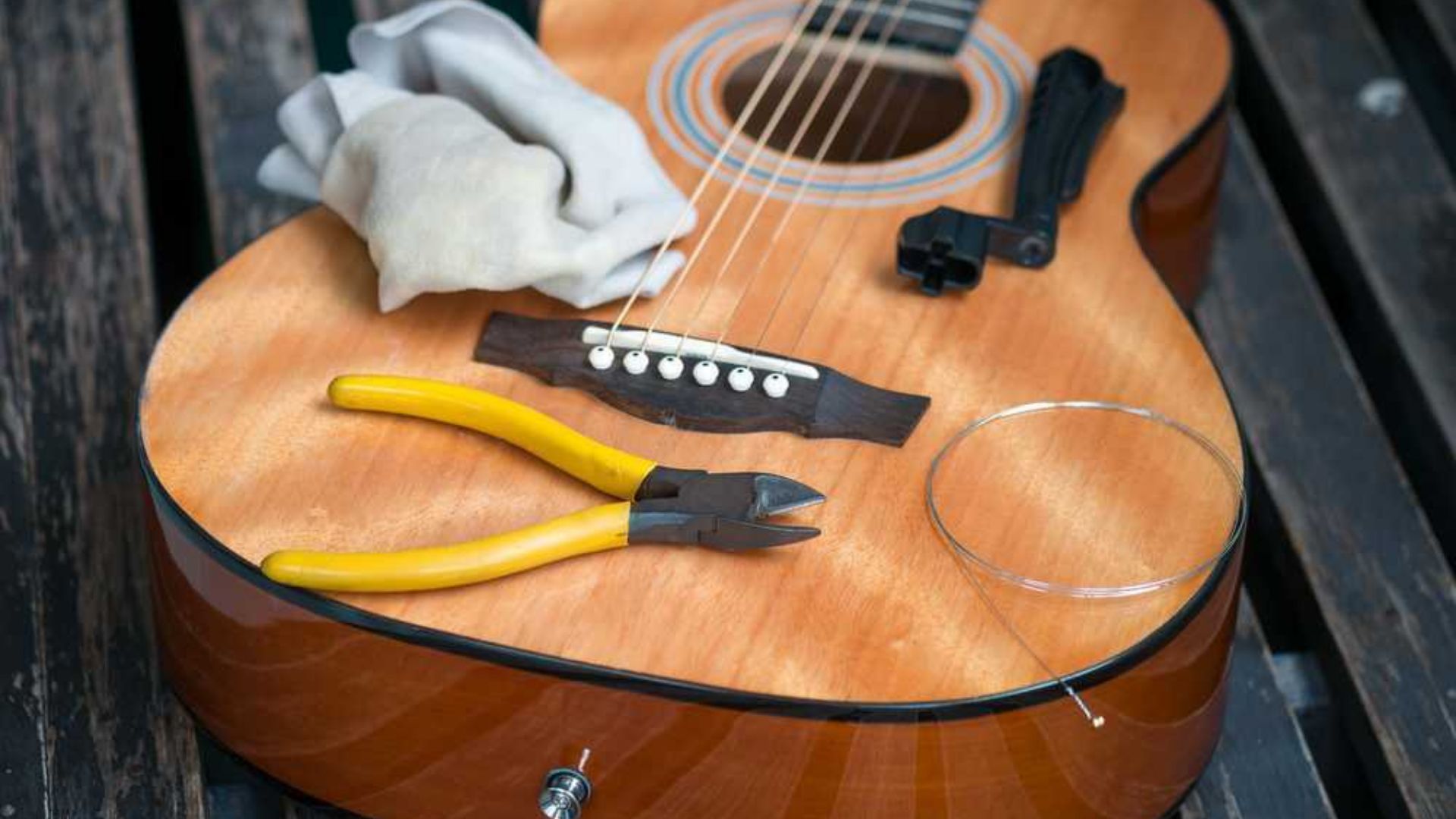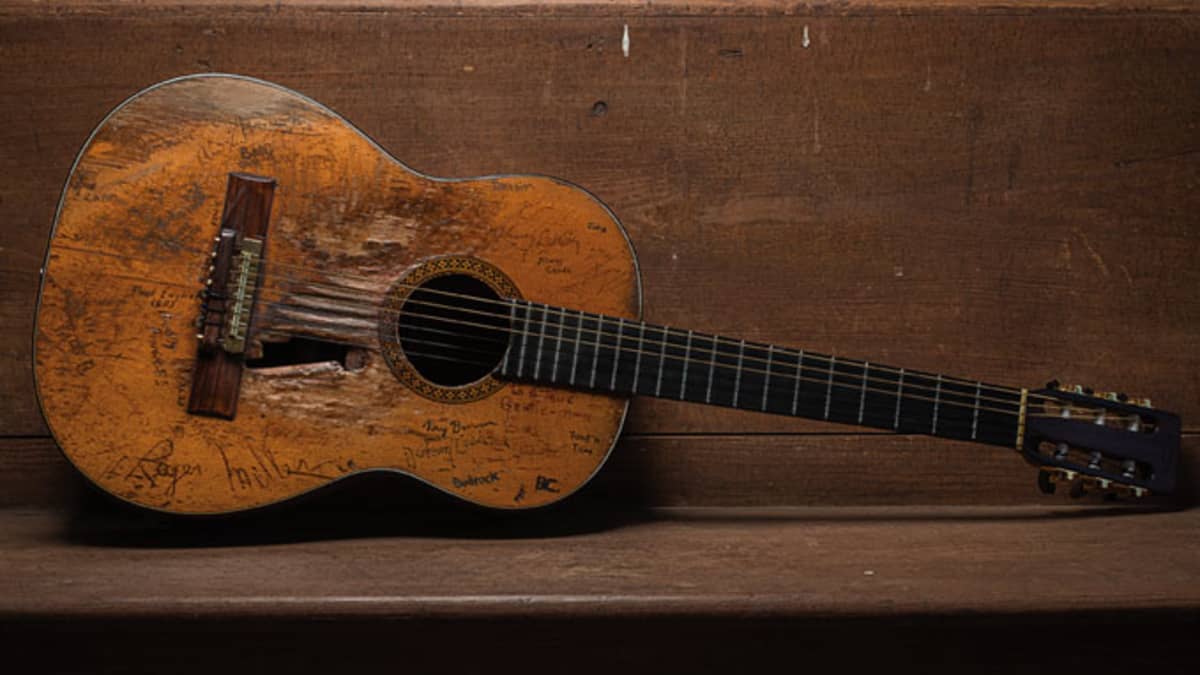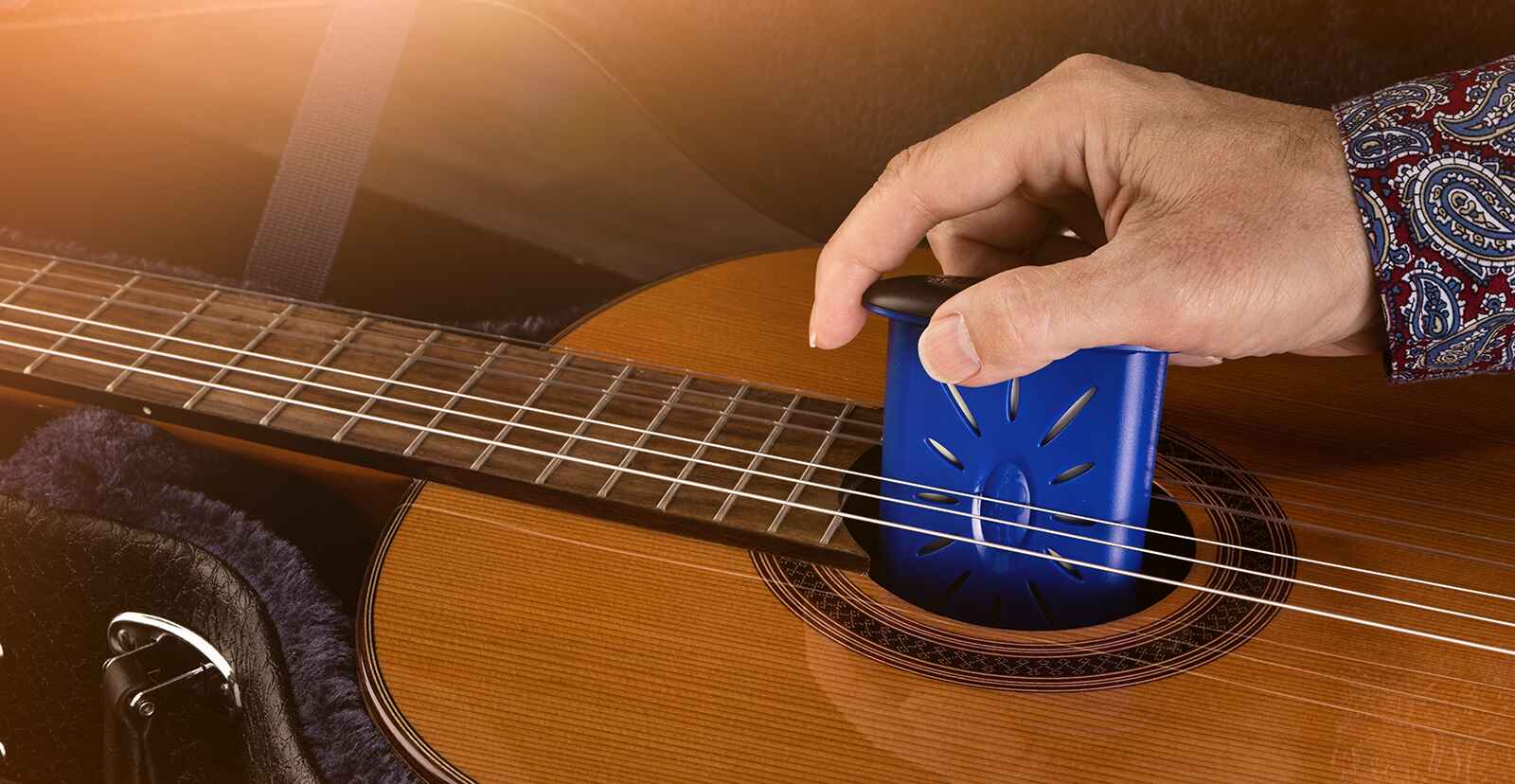Introduction
Welcome to the world of acoustic guitars! Whether you are a beginner or an experienced player, you know that taking care of your instrument is vital to maintaining its sound quality and longevity. One crucial aspect of guitar maintenance is cleaning the fretboard.
The fretboard is the part of the guitar where you press the strings down to create different notes and chords. Over time, dirt, sweat, and oils from your fingers can build up on the fretboard, affecting the playability and tone of your guitar. Cleaning the acoustic guitar fretboard not only improves its performance but also enhances its aesthetic appeal.
In this article, we’ll guide you through the process of cleaning your acoustic guitar fretboard step by step. We’ll discuss the tools and materials you’ll need, the exact procedure to follow, as well as some helpful tips and precautions to ensure the best results.
By dedicating a little time to clean your acoustic guitar fretboard, you’ll not only maintain its optimum playability but also prolong its lifespan. So, let’s dive in and discover how to give your fretboard the care it deserves!
Why is it important to clean the acoustic guitar fretboard?
Cleaning the acoustic guitar fretboard is an essential part of guitar maintenance. Here’s why it’s important:
Prolongs the Life of Your Strings: When you play the guitar, dirt, sweat, and oils from your fingers accumulate on the fretboard. Over time, these residues can affect the condition of your guitar strings, causing them to deteriorate faster. By regularly cleaning the fretboard, you remove these harmful substances, prolonging the life of your strings and preventing costly replacements.
Improves Playability: A dirty, grimy fretboard can negatively impact your playing experience. As dirt builds up between the frets, it can create friction, making it harder to slide your fingers along the strings smoothly. Cleaning the fretboard ensures a smooth playing surface, allowing you to effortlessly perform bends, vibratos, and other techniques.
Enhances Sound Quality: The condition of the fretboard directly affects the tone of your acoustic guitar. A clean fretboard not only improves the sustain and resonance of the strings but also allows them to vibrate freely and produce clear, crisp tones. By removing dirt and grime, you can restore the natural resonance of your guitar and achieve the best possible sound quality.
Maintains Aesthetic Appeal: Let’s not forget the visual aspect of your guitar. A dirty fretboard can make your instrument look neglected and worn-out. Regular cleaning helps maintain the aesthetic appeal of your acoustic guitar, keeping it looking shiny and well-maintained.
Prevents Damage and Costly Repairs: Neglecting to clean your fretboard can have long-term consequences. As dirt and grime accumulate, they can seep into the wood and cause damage, potentially leading to costly repairs. By keeping your fretboard clean, you protect it from moisture retention, cracking, and other issues that could require professional intervention.
Now that you understand why cleaning the acoustic guitar fretboard is essential, let’s move on to the tools and materials you’ll need for the cleaning process.
Tools and Materials Needed
Before you start cleaning your acoustic guitar fretboard, gather the following tools and materials:
- Lemon Oil or Fretboard Cleaner: Lemon oil is commonly used to clean and condition guitar fretboards. It helps remove dirt and grime while moisturizing the wood. Alternatively, you can use a dedicated fretboard cleaner specifically designed for guitar maintenance.
- Microfiber Cloth: A soft microfiber cloth is ideal for cleaning your fretboard. It won’t scratch or damage the wood, and its fine fibers effectively collect dirt and moisture.
- Toothbrush: A soft-bristled toothbrush can be used to scrub the fretboard gently. This will help loosen any stubborn dirt or debris that has accumulated between the frets.
- Fretboard Guards: Fretboard guards are thin strips made of rubber or plastic that protect the wood surrounding the frets. They prevent accidental scratches or scuffs when cleaning or polishing the fretboard.
- Guitar Polish: While not necessary for cleaning, guitar polish can be used to restore the shine and luster of your fretboard once it is clean.
- String Cutter: Since you’ll be removing and replacing the strings during the cleaning process, a string cutter is handy for trimming the excess string length.
Having these tools and materials ready before you begin will ensure a smooth and efficient cleaning process. Now that you have everything you need, let’s move on to the step-by-step procedure for cleaning the acoustic guitar fretboard.
Steps to Clean the Acoustic Guitar Fretboard
Follow these step-by-step instructions to effectively clean your acoustic guitar fretboard:
- Prepare the Guitar: Start by loosening the guitar strings. This will make it easier to access and clean the fretboard. You can do this by turning the tuning pegs in a counterclockwise direction until the strings are slack.
- Remove the Strings: Once the strings are loose, remove them from the guitar. Take note of their positions so that you can restring the guitar correctly later. Use a string cutter to trim the excess string length if necessary.
- Clean the Fretboard: Apply a small amount of lemon oil, fretboard cleaner, or a mixture of equal parts water and vinegar onto a soft microfiber cloth. Gently rub the cloth along the entire length of the fretboard, focusing on areas with visible dirt or grime. Be careful not to scrub too hard to avoid damaging the wood.
- Target Stubborn Dirt: For tougher dirt or debris, use a soft-bristled toothbrush to gently scrub the affected areas. Use light, circular motions to dislodge the dirt without scratching the fretboard. Wipe away the residue with a clean microfiber cloth.
- Condition the Fretboard: After cleaning, apply a small amount of lemon oil or fretboard conditioner to a clean cloth. Rub it onto the fretboard, ensuring that the wood absorbs the oil. This step helps to moisturize and protect the wood, preventing it from drying out and cracking.
- Clean the Fret Slots: Use the corner of the microfiber cloth or a specialized fret cleaning tool to clean the slots between the frets. Gently remove any debris or buildup in these areas.
- Wipe Down the Guitar Body: Take the opportunity to wipe down the guitar body with a clean microfiber cloth. This will remove any dust or fingerprints, keeping your guitar looking its best.
- Restring the Guitar: Once the fretboard is clean and dry, carefully restring the guitar following the correct order and tightening the strings gradually. Be sure to tune each string to its appropriate pitch.
- Optional: Apply Guitar Polish: If desired, you can apply a small amount of guitar polish to a separate cloth and gently buff the fretboard and guitar body. This will enhance the shine and provide additional protection.
Following these steps will result in a clean and well-maintained acoustic guitar fretboard. Now that you know how to clean the fretboard, let’s explore how to properly restring your guitar.
Removing Strings from the Acoustic Guitar
Before you can clean the acoustic guitar fretboard, you’ll need to remove the strings. Here’s a step-by-step guide on how to do it:
- Loosen the Strings: Start by turning the tuning pegs in a counterclockwise direction to loosen the strings. Do this for each string until they are slack. This relieves the tension and makes it easier to remove them.
- Unwind the Strings: Once the strings are slack, unwind them from the tuning pegs at the headstock. Hold the string near the tuning peg and unwind it carefully. Keep a firm grip to prevent the string from snapping back or scratching the guitar.
- Untie or Cut the Strings at the Bridge: After removing the strings from the tuning pegs, locate the bridge of your guitar. Carefully untie the strings from the bridge if they are tied in place. If your guitar has bridge pins, use a bridge pin puller or a firm grip to pull the pins up and remove the strings.
- Remove the Strings from the Guitar: Once the strings are free from the bridge, carefully slide them out of the guitar’s soundhole. Take your time to prevent any accidental scratches to the guitar body or fretboard.
Keep in mind that it’s essential to handle the strings with care to prevent injury and avoid damaging your guitar. After removing the strings, you can proceed with cleaning the fretboard. Once the fretboard is clean, you’ll learn how to restring your acoustic guitar in the next section.
Removing Dirt and Grime from the Fretboard
Now that the strings are removed, let’s dive into the process of removing dirt and grime from the acoustic guitar fretboard. Follow these steps to ensure a thorough cleaning:
- Prepare the Cleaning Solution: Dilute a small amount of lemon oil, fretboard cleaner, or create a mixture of equal parts water and vinegar in a spray bottle or small container. This solution will help loosen and remove the dirt and grime from the fretboard.
- Apply the Cleaning Solution: Spray or carefully apply the cleaning solution onto a soft microfiber cloth. Make sure the cloth is damp, not dripping wet. Avoid spraying the solution directly onto the guitar to prevent any moisture from seeping into the soundhole or other sensitive areas.
- Gently Rub the Fretboard: With the damp cloth, gently rub the fretboard in small circular motions. Pay close attention to areas with visible dirt or grime buildup. Use light pressure to avoid damaging the wood. The cleaning solution will help dissolve and remove the dirt, while the cloth collects it.
- Target Stubborn Dirt: For any stubborn or hard-to-reach dirt, use a soft-bristled toothbrush. Dip the toothbrush into the cleaning solution and carefully scrub the affected areas, applying gentle pressure. This will help dislodge any persistent dirt or debris stuck between the frets or in the fret slots.
- Wipe the Fretboard Clean: Once you have thoroughly cleaned the fretboard, use a clean, dry microfiber cloth to wipe away any excess moisture and residue. Make sure the fretboard is completely dry before moving on to the next step.
By following these steps, you’ll effectively remove dirt and grime, leaving your acoustic guitar fretboard clean and ready for the next stage of maintenance.
Conditioning the Fretboard
After cleaning the acoustic guitar fretboard, it’s important to condition it to keep the wood in optimal condition. Here’s how to effectively condition the fretboard:
- Select a Conditioner: Choose a high-quality fretboard conditioner or lemon oil specifically designed for guitar maintenance. These products help moisturize and protect the wood.
- Apply a Small Amount of Conditioner: Place a small amount of conditioner or oil onto a clean cloth. Gently rub the conditioner onto the fretboard, focusing on each section individually. Be sure to cover the entire fretboard, including the areas in between the frets.
- Allow the Conditioner to Penetrate: After applying the conditioner, let it sit for a few minutes to allow it to penetrate the wood and moisturize it. This step helps prevent the wood from drying out and cracking.
- Wipe off Excess Conditioner: Once the conditioner has had time to penetrate the fretboard, use a clean cloth to gently wipe off any excess product. Make sure to remove all visible residue from the fretboard surface.
- Buff the Fretboard: To further enhance the shine and smoothness of the fretboard, you can lightly buff it with a clean cloth. This step will give your fretboard a polished look.
Regularly conditioning the fretboard not only keeps it looking beautiful but also helps to prevent it from drying out and becoming susceptible to damage. By following these steps, you’ll ensure that your acoustic guitar fretboard stays in excellent condition for years to come.
Restringing the Acoustic Guitar
Now that the acoustic guitar fretboard is clean and conditioned, it’s time to restring your instrument. Follow these steps to restring your acoustic guitar properly:
- Select the Right Strings: Choose high-quality guitar strings that are appropriate for your playing style and desired tone. There are various types of strings available, such as phosphor bronze, 80/20 bronze, and coated strings. Consider your personal preferences and the sound you want to achieve.
- Thread the String: Start by inserting the end of the string into the appropriate bridge hole, depending on your guitar’s design. For guitars with bridge pins, push the ball end of the string into the hole, ensuring it is secured underneath the pin. For guitars with a different bridge design, follow the manufacturer’s instructions.
- Wrap the String around the Tuning Peg: With the string attached to the bridge, thread it through the corresponding nut slot. Next, wrap the string around the tuning peg, leaving enough slack for winding.
- Begin Winding the String: Hold the string firmly with one hand. Use the other hand to turn the tuning peg clockwise, winding the string around it. Keep tension on the string while winding to ensure a secure and stable fit.
- Tune the String: Once the string is adequately wound, use a tuner to bring it up to the desired pitch. Start with the sixth string (E) and move sequentially to the first string (high E), adjusting the tension as needed until the string is in tune.
- Trim Excess String: Once the string is tuned, use a string cutter to trim the excess length, ensuring there is enough clearance while avoiding any unnecessary protrusion.
- Repeat for Remaining Strings: Follow the same process to restring the remaining strings, ensuring proper threading, winding, tuning, and trimming.
- Stretch and Retune: After restringing all the strings, gently stretch each one by pulling it away from the guitar body. This helps to settle the strings and stabilize their tuning. Retune the strings as necessary to achieve accurate pitch.
Restringing your acoustic guitar is a routine maintenance task that ensures optimal performance and sound quality. By following these steps, you’ll have your guitar restrung and ready to play in no time.
Tips and Precautions
Before you clean and maintain your acoustic guitar fretboard, here are some valuable tips and precautions to keep in mind:
- Protect the Guitar: When cleaning the fretboard, be cautious not to expose the guitar to excessive moisture. Avoid spraying cleaning solutions directly on the guitar body, as this may damage the finish or permeate sensitive areas.
- Use the Right Products: Always use products specifically designed for guitar maintenance. Lemon oil or dedicated fretboard cleaners are safe options for cleaning and conditioning the fretboard. Avoid using household cleaners or oils not intended for guitar care, as they can damage the wood.
- Be Gentle: Handle the guitar with care throughout the cleaning process. Apply gentle pressure when cleaning the fretboard to avoid causing scratches or dents. Use soft brushes and cloths to prevent any potential damage to the wood or finish.
- Regular Maintenance: Get into the habit of regularly cleaning and conditioning your fretboard to prevent excessive buildup of dirt and grime. This will make future cleaning tasks easier and keep your guitar in excellent condition in the long run.
- Consult a Professional: If you have any doubts or concerns about cleaning or maintaining your acoustic guitar, it’s always best to consult a professional guitar technician. They can provide expert advice, perform advanced maintenance, and address any specific issues with your instrument.
- Protect Your Hands: Wear gloves or wash your hands before cleaning your guitar to prevent the transfer of oils, dirt, or sweat onto the fretboard. This will help maintain a clean and hygienic playing surface.
- Store Properly: When not in use, store your acoustic guitar in a suitable case or stand to protect it from dust, temperature fluctuations, and potential accidents or knocks that could damage the fretboard or other components.
By following these tips and taking necessary precautions, you’ll ensure that your acoustic guitar fretboard remains clean, well-maintained, and ready for your next jam session or performance.
Conclusion
Cleaning the acoustic guitar fretboard is an essential part of maintaining your instrument’s playability, sound quality, and overall appearance. By following the steps outlined in this guide, you can effectively remove dirt, grime, and excess oils from the fretboard, prolonging the life of your strings and enhancing the overall performance of your guitar.
Remember to gather the necessary tools and materials before starting the cleaning process. Select a suitable cleaning solution, such as lemon oil or fretboard cleaner, and use a soft microfiber cloth and toothbrush for stubborn dirt. Conditioning the fretboard with a specialized oil or conditioner helps keep the wood moisturized and protected.
When restringing your guitar, make sure to thread the strings correctly, wind them securely around the tuning pegs, and tune them to the desired pitch. Taking care of your guitar through routine cleaning and maintenance will not only improve its sound and playability but also extend its lifespan.
Finally, keep in mind the tips and precautions shared in this guide. Practice regular maintenance to prevent excessive buildup of dirt and consult a professional guitar technician if needed. By following these guidelines, you’ll ensure that your acoustic guitar fretboard remains in optimal condition for years of enjoyment.







